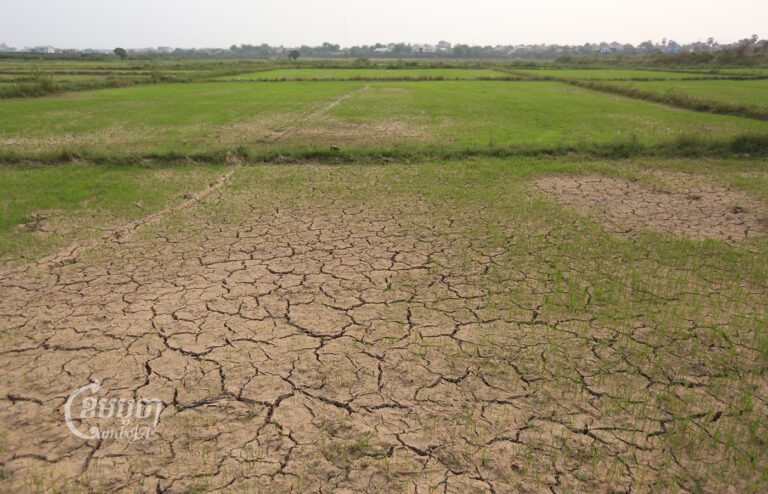Cambodia’s outstanding external debt reached more than $9.18 billion as of the first half of 2021 and is expected to reach more than $10 billion by the year’s end, an increase from $8.8 billion at the end of 2020.
The draft law on national budget management in 2022, presented on August 17 by the Ministry of Economic and Finance, shows that China accounted for 43.78 percent of Cambodia’s foreign debt, while multilateral partners accounted for 30.13 percent. The rest is owed to other individual countries.
Aun Pornmoniroth, the Minister of Economy and Finance, said in a speech that national revenue, especially non-tax revenue, is likely to face further decline in 2021 due to the COVID-19 and rising government spending.
“However, this huge budget deficit is not a problem as the government has additional savings to fulfill the needs,” he said.
The government spent $829 million on combating COVID-19 in 2020 and expects to expend $1.4 billion in 2021. The government currently plans to spend an additional $910 million to fight the virus next year.
Pornmoniroth said that in 2022, the government will adhere to the principle of “prepare for the worst, hope for the best,” in order to have sufficient funds to fight the COVID-19 and support the economy and society in the medium term.
According to the ministry’s forecast, the Cambodian economy will grow by 2.4 percent, down from the 4 percent forecasted at the start of the year. Growth is projected to reach 4.8 percent in 2022.
From 1993 to the end of 2020, according to the report, the Cambodian government signed concessional loan agreements with development partners totaling $15.04 billion in which 84 percent covered infrastructure.
Thirteen civil society organizations were invited to share recommendations to the government, and the report noted they asked the government to use loans efficiently and effectively, ensure the participation of all stakeholders, and strengthen the public procurement process.
CSOs recommended foreign loans should be used for socio-economic development, such as building professional skills for workers and economic diversification.
Pech Pisey, executive director of Transparency International Cambodia, which offered recommendations, told CamboJA that more accountability was needed.
“We are concerned about the situation in Cambodia due to the general assessment of corruption, whether the loan will be managed transparently, honestly and with good governance,” he said. “We have observed that there is an irregularity in the construction of poor-quality infrastructures, and we need to use loans to build quality infrastructures.”
Pisey said while Cambodia needs large-scale loans for development projects, China is the main source as some countries and multilateral partners are careful about lending to developing countries.
“Therefore, Cambodia has no choice but to rely on China for convenient financing sources, which is a requirement in the economic strategy,” he said. “However, Cambodia must be more careful to avoid debt traps that lead to the transfer of public property, as is the case in Sri Lanka.”
Government spokesman Phay Siphan said the Ministry of Economy has mechanisms in place to manage public debt.
“These concerns are politically motivated, not technical issues. Cambodia is still able to repay its debt every year, even in the context of COVID-19,” he said. “Compared to Cambodia’s revenue, we still have more room to borrow and the language of ‘Debt Trap’ has been spoken for years.”
According to the ministry report, in 2020, the government made debt service payments to development partners totaling $360.30 million. From 1993 to the end of 2020, the government made debt service payments totaling $2.11 billion.
The IMF’s board of governors recently approved a $240 million grant to Cambodia to support the economy affected by the pandemic. In June, the World Bank approved $200 million worth of International Development Association credit for Cambodia’s fight against the virus and broader economic recovery.
Cambodia’s economy has been hit hard by the pandemic. The UK-based Fitch Ratings credit rating agency revised its 2021 real GDP growth forecast for Cambodia to 2.5 percent, down from its previous forecast of 3.8 percent.
Vice president and business researcher of the Asian Vision Institute, Chheng Kimlong, said compared to the country’s total GDP, the amount of external debt has not yet reached a red line and remains manageable.
“Normally, if we rely on a single source of loan, it can be risky, but I think Cambodia is smart enough to avoid the debt trap,” he said. “Cambodia will not fall into the same situation as in Sri Lanka.”
He said the debt ratio to GDP must not exceed 60 percent of the country’s total GDP for low- and medium-income countries while the ratio for developed countries can be up to 80 percent. Cambodia’s current total GDP is around more than $20 billion.














